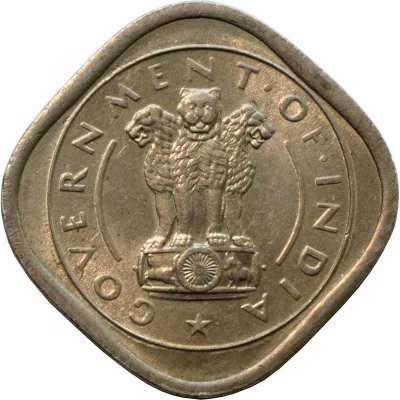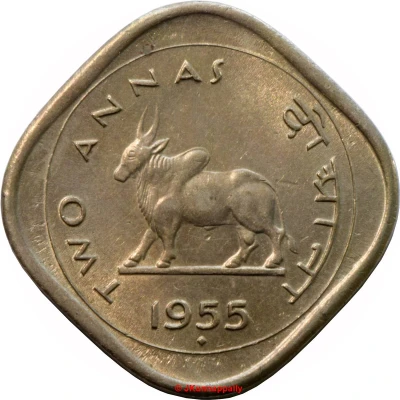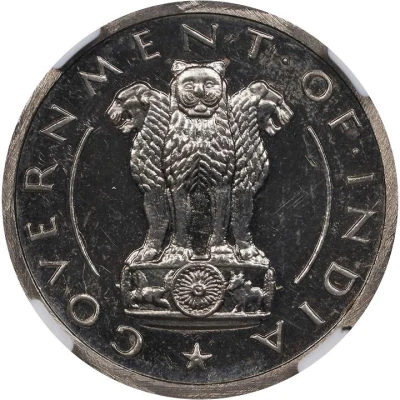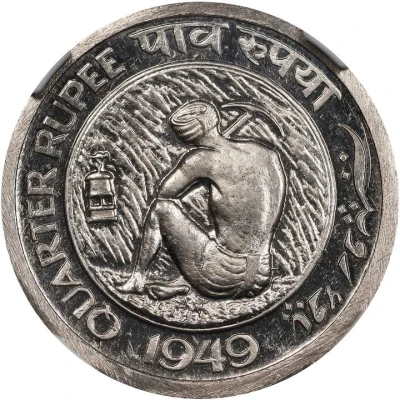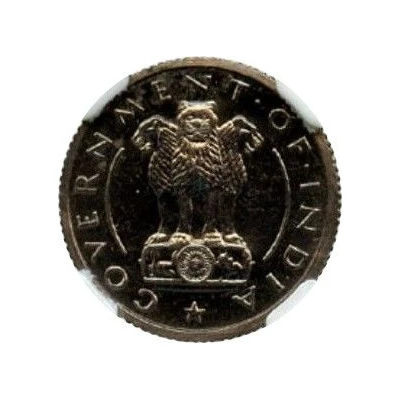
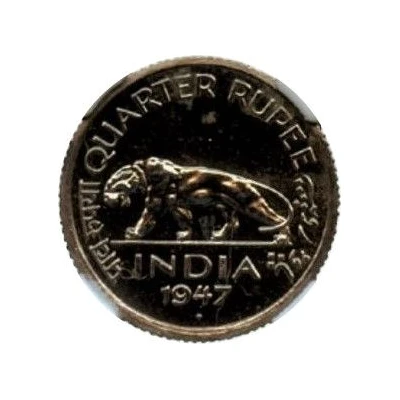

© Baldwins of St James Ltd
¼ Rupee - Mule Tiger Pattern
1947 year| Nickel | 2.73 g | 19 mm |
| Location | India |
|---|---|
| Issuing institution | Government of India |
| Period | Dominion (1947-1950) |
| Type | Pattern |
| Year | 1947 |
| Value | ¼ Rupee |
| Currency | Rupee (1950-1957) |
| Composition | Nickel |
| Weight | 2.73 g |
| Diameter | 19 mm |
| Thickness | 1.53 mm |
| Shape | Round |
| Technique | Milled |
| Orientation | Medal alignment ↑↑ |
| Demonetized | Yes |
| Updated | 2024-10-05 |
| Numista | N#423277 |
|---|---|
| Rarity index | 97% |
Reverse
Tiger flexing and walking left with lettering surrounding. Country and date below.
Scripts: Devanagari, Latin, Urdu
Lettering:
पाव रुपया QUARTER RUPEE پاو روپیہ
INDIA
1947
Engraver: Patrick Brindley
Edge
Reeded
Comment
Probable Patterns, in proof, issued after Indian independence. A 1948 strike may exist as well. This strike is a mule of the Government of India obverse found on ROI coins and the last British India issues (which were in base metals).
Interesting fact
The Mule Tiger Pattern 1947 quarter rupee coin is a rare and unique coin that was minted in 1947, during the transition from the British Raj to independent India. It features the profile of King George VI on one side and a tiger on the other, which is why it's called a "mule" coin - it combines the obverse (front) of the British Indian rupee with the reverse (back) of the Indian rupee. This coin is particularly interesting because it represents a moment in history when India was transitioning from a British colony to an independent nation, and it's a symbol of the country's rich history and cultural heritage.
